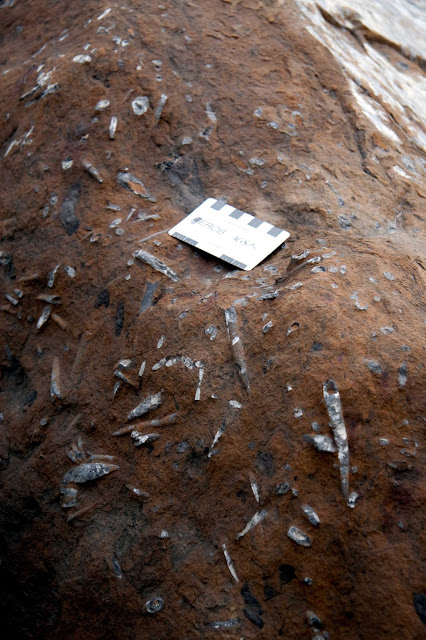Last month, as I was searching through photos from some field work I did in west-central Alberta in 2010, I found a photo of a different sort of battlefield. I shared it on twitter, and it was retweeted a few times - enough to motivate me to do a more detailed blog post about it.
The photo is of a boulder from the Rock Creek/Highwood Member of the Jurassic Fernie Formation. It's not in situ, but I've been told that there are in situ outcrops in the same area. The boulder is full of belemnites, or rather belemnite guards.
Belemnites are the state fossil of Delaware. They are an extinct cephalopod (closest modern species are squid) that were found in Jurassic and Cretaceous oceans (although there is some evidence that they originated in the Triassic). The guards were part of the internal structure and it is believed they were used for propulsion and balance in the water, perhaps similar to how a submarine's ballasts work.
Belemnites can be used for dating Jurassic and Creatceous strata, but they are also an important environmental indicator - they lived in warm (relatively) shallow seas.
The term "belemnite battlefield" is used to describe a high concentration of belemnites. These accumulations could be related to mass-deaths, although not necessarily battles. They could be lag deposits, coarse material left behind after the fine sediment they were deposited in was washed away.
I'm not sure where the term "belemnite battlefield" originated but I like it and I made sure to fit it into my MSc thesis.
 |
| "Belemnite Battlefield" |

I got a clean solution from here. Also I can refer to you all Las Vegas here to get educational helps. To chat the accuracy this is a polite post concerning this topic. On the other hand will wait for more posts from the blogger. Thanks a lot…….
ReplyDelete